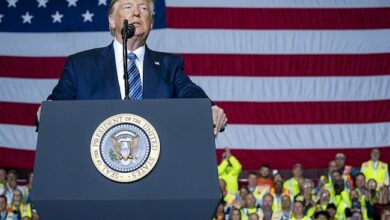
By Beenish Altaf
The Nuclear Posture Review is a process that determines the role of nuclear weapons in the US security strategy for the future arena. This review is basically to analyze and assess that the US nuclear policies are secure and its deterrence works effectively to counter the threats emanating in the 21st century.
The very initial reactions on the recently released 2018 nuclear posture review were quite a mix by both the national and international academicians and policy makers. Rebecca Hersman, Deputy Assistant Defense Secretary for countering weapons of mass destruction during the Obama administration and now ensconced at the Center for Strategic and International Studies, delves into some of the reactions, which suggests that the review opens the door to nuclear “war fighting,” or closes it; raises the nuclear threshold, yet lowers it; continues some Obama administration policies and programs, or departs from them dramatically; goes too far in portraying a confrontational approach to Russia and China, yet does not go far enough. It’s fundamentally different from the Obama administration’s nuclear policy, but it is also largely the same.
The US current administration has recently publicized its new nuclear policy. It has been released by the Pentagon in January 2018, as a hard-hitting, realistic assessment of foreign threats and the US capabilities. James Mattis, Secretary of Defense, has in fact, suggested several tweaks to account for the emerging threats to the US, and likewise avowed the central elements of this nuclear posture. This recent posture review supposedly describes “the world as it is, not as we wish it to be” and calls for an expansion of America’s nuclear arsenal to confront the evolving capabilities of other nuclear powers.
Paradoxically, this document justifies its call for modernized nuclear weapons, by emphasizing more on its adversaries namely China, Russia, and North Korea, which the US considers, are designing and developing new nuclear weapons (more specifically, it was the Pentagon’s concern over Russia’s nuclear buildup in recent years). There is also a proposal to redeploy nuclear-armed, sea-launched cruise missiles (SLCMs) by Secretary Mattis,’ which is a move to pressurizing Russia.
All the same, the major and prevalent capability shift in the 2018 nuclear posture review is the move to develop low-yield nuclear weapons in the form of a new SLCM. It has been justified by narrating that “the United States will enhance the flexibility and range of its tailored deterrence options…. Expanding flexible US nuclear options now, to include low-yield options, is important for the preservation of credible deterrence against regional aggression. It will raise the nuclear threshold and help ensure that potential adversaries perceive no possible advantage in limited nuclear escalation, making nuclear employment less likely.”
However, it could be taken in terms that the US is intended to indulge in a nuclear war-fighting scenario. It does recognize that the deterrence is dynamic, so in order to ensure a credible and effective deterrence, the US has shifted to next steps of developing advance technologies.
The 2018 nuclear posture review reflects Washington’s intention to use US nuclear weapons as a hegemonic tool once again. This could be taken critically in terms of the President’s Trumps intellect, since it is a big policy shift of the century. The warning of Andrew C. Weber, an Assistant Defense Secretary, should be taken into account here, who is quoted as saying, “almost everything about this radical new policy will blur the line between nuclear and conventional.” If adopted, he said, the new policy “will make nuclear war a lot more likely.” It would be pertinent to mention here the experiences from the past, that the miscalculation has brought the precipice of war, as with the Cuban missile crisis, or actual war, as with the events that led up to World War I.
The hegemonic aspiration of the US is reflected and may perhaps be seen lucidly in the central conclusion of the broader National Defense Strategy that was released just a month back, in January 2018 stated: the US must recognize the reality of a return to great power competition and posture itself accordingly.
Last but not the least, if viewed the 2018 nuclear posture review critically, the unhinged intentions of the Trump Administration has quite vivid in it. His outlook actually guides the current US nuclear weapons posture, which modernize the US nuclear deterrence in a way that calls for the need of developing new nukes. It is a document that tried to build a consensus in the US on the needs for the 21st century nuclear arsenal. The perils of the Trump administration’s nuclear policy indicates that it can escort only to advanced and more sophisticated risks of nuclear calamities, with global instability and proliferation of even more weapons of mass destruction. Nevertheless, the 2018 NPR arrives in the time of global tensions and rising strategic competitions, raising questions about how the policies will be interpreted by its allies and adversaries alike. Eventually, time will acquaint with the answers.




